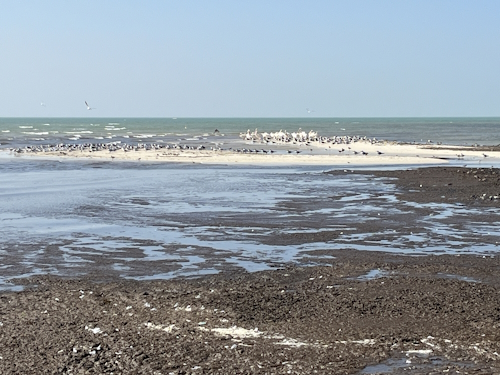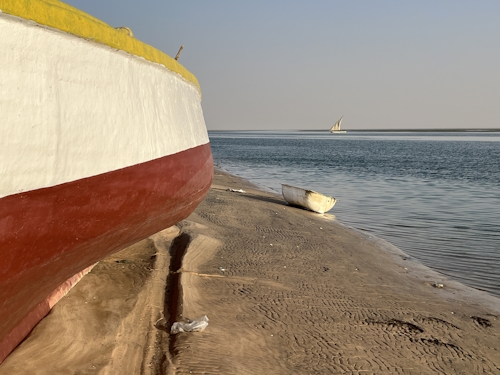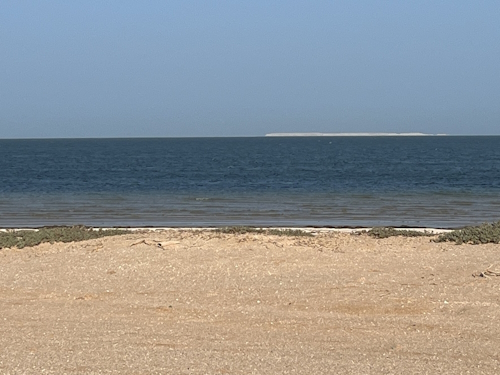Quick Access
1205 of 1223 WHS have been reviewed by our community.
Coro and its Port
Alejandro Lau China - 30-Dec-24

(Visited 2024.10)
In these years Venezuela seems to be a bit "removed" from the plan of international tourists. After an overnight bus from Caracas we arrived at Coro in early morning. We had some empanadas as our breakfast near the terminal, which is fair and delicious.
After the breakfast we walk ~15 min to the WHS area
Read OnSacri Monti of Piedmont and Lombardy
CugelVance Germany - 26-Dec-24

Time of the visit: Varallo the 22nd of nov.,Varese the 24th of nov.2024
Varallo
I stayed one night in Varallo and two in Varese so that I had plenty of time to discover both" little Jerusalems".
When I arrived in Varallo it was heavily snowing as it had been the entire night before. That's why the snow was almost a half meter deep. I had to buy rubber boots because my shoes were completely unsuitable for climbing up a snow-covered hill. The climb is fairly easy under normal circumstances, but strenuous with heavy snow. I walked up the footpath near the cable car station and after visiting the area I walked down the "Salita Pedonale" from the cable car station on the hill to the town of Varallo.
Read OnAncient Tea Plantations of Pu'er
Alex Goh Malaysia - 29-Dec-24
From my base at Kunming, it’s a 1 hour flight to the south-west town of Lancang close to the Myanmar border to get to Jingmai Mountain for the Ancient Pu’er tea plantation. For some reasons, both my flights to and from Lancang were delayed 2-3 hours. This seems to be the routine occurrence as I was told by my Lancang driver that it was due to airline trying to sell some last minute tickets. The Lancang airport is small with only 2-3 flights a days. Upon arrival, it’s easy to make arrangements with the airport taxis for a 5-6 hrs drive/tour of world heritage Jingmai Mountain to marvel at the ancestors of Pu’er tea plantation
Read OnWanuskewin (T)
GabLabCebu Philippines - 29-Dec-24

Wanuskewin is not the kind of place you simply stumble into; it's a site one would usually have to make quite a journey for. Most definitely, it once drew Native Americans in far greater numbers than it does today's tourists. However, I was lucky enough to visit Western Canada in July 2024 and figured it was the perfect time to make the journey all the way out here. A journey it was! Unless you live in or frequent Saskatchewan, it's a 6-hour drive from the big cities of Alberta over endless fields of grass, corn, and canola. At least Prince Albert National Park is just about a 2-hour drive away, to make the journey more worthwhile.
Read OnEl Escurial
Ana - 28-Dec-24
Arrived on a chilly December morning to visit the complex. The painted ceilings, walls, and tapestries inside really do make the palace, as the outside and parts of the inside are otherwise pretty plain. One thing I wanted to mention, since I saw conflicting information in other reviews, is that on my visit today photography was almost entirely allowed. The only room that disallowed photography was the Pantheon of the Kings - otherwise, I snapped away in full view of the staff (including in spaces like the library) without so much as a shake of the head.
Read OnBlog WHS Visits
WHS #946: Banc d'Arguin
Mauritania’s Banc d’Arguin NP is rarely visited and has only been reviewed once, about 18 years ago. However, this is the number one place for waterfowl and migratory waders among the several "bird WHS" along the West African Coast. It is “better” than Djoudj and the Saloum Delta, and only the 2025 nomination Bijagos Archipelago in Guinea-Bissau comes close but still has only 50% of its numbers. We spent a full day and a night in its core zone, stretching 170km along the Atlantic Coast.
The Banc d’Arguin is so rich because it lies next to an ocean upwelling that produces nutrient-rich cooler waters. This sets a whole food chain of phytoplankton-filter feeders-fish-birds-marine mammals in motion.
We approached it from the South, driving for 2.5 hours from the capital Nouakchott. This is mostly a good paved road, where our drivers even clocked 130km/h. The surrounding landscape is rather featureless, though you will see some dromedaries roaming around. We made a first stop at Mamghar, one of the seven fishing villages inside the park. The smell of fish is predominant here: the people leave their gutted fish drying out on the fences of the corrals for the goats.
On the outskirts of town, you can walk onto the seabank and observe bird colonies that have found their nesting or resting spot right there. We saw two sandbanks right offshore fully covered by a variety of bird species, including larger ones such as pelicans. A bit more inland, there are lakes surrounded by green bushes (a rare sight here in the desert) and there even is a bird hide. It was a fine short visit, but when you’re a serious birder, you really need to allocate more time to this park – you can go on full-day boat trips to sand banks further away.
After an hour we drove North, taking the great beach road and sometimes diverting a bit into the dunes. It’s very windy along the coast and the weather has created shell middens and finely carved sand dunes.
We overnighted in a permanent camp near Iwik, which is run by a local cooperative. The living conditions in this fishing village built out of shipping containers and wooden sheds look very tough, as it gets very hot out here and there are hardly any amenities. We could admire the works of the fishermen though, preparing their tall wooden sailing ships for another morning at sea.
The next day we drove another 1.5 hours North through the park. In this area, you can clearly see the offshore sandbanks – they look a bit like icebergs floating by in the ocean (see photo 3, the white bit in the distance); to me, it’s the most characteristic image of this WHS.
We also visited Cap Blanc, about 4 hours from Iwik, which is labelled in the official documentation and at its visitor centre as a ‘satellite site’ to Banc d’Arguin NP, but has been excluded from the final inscription on the instigation of IUCN because of border issues. It comprises the Mauritanian part of the peninsula that protrudes into the ocean from the city of Nouadhibou. You need to pass through the very busy port area, where the infamous Iron Ore Train arrives. Just on the tip, there’s a nature reserve, not much more than a small but pretty beach. Its pride was the colony of rare monk seals, but they all - except for 1 or 2 that still come by occasionally - have migrated to the Western Saharan side of the peninsula as it is much quieter over there.
Els - 12 January 2025
Comments
Astraftis 13 January 2025
It all looks very dreamy there.
Danny B 12 January 2025
Thanks Els for your very indepth review - The bucket list keeps getting longer.


